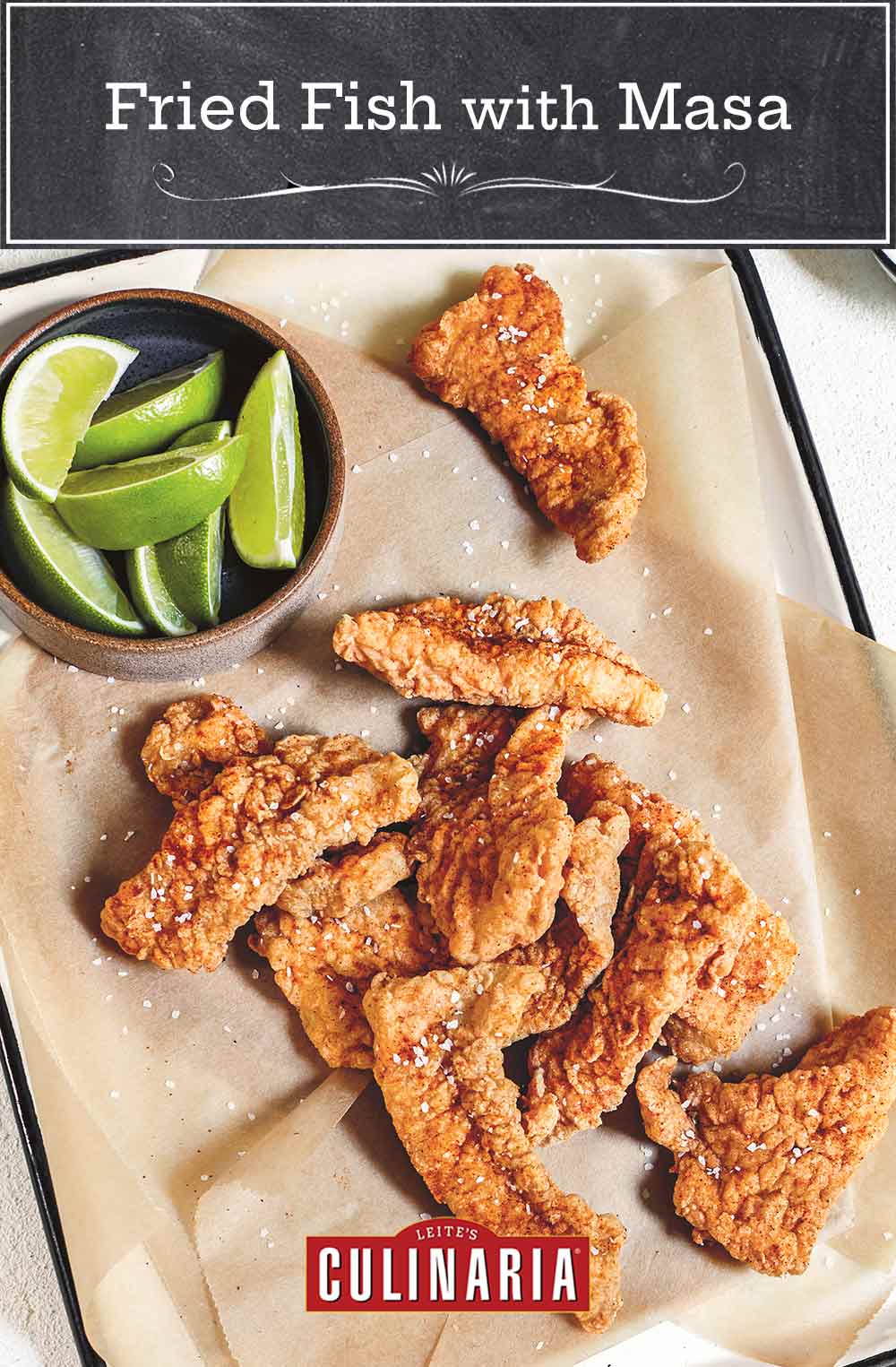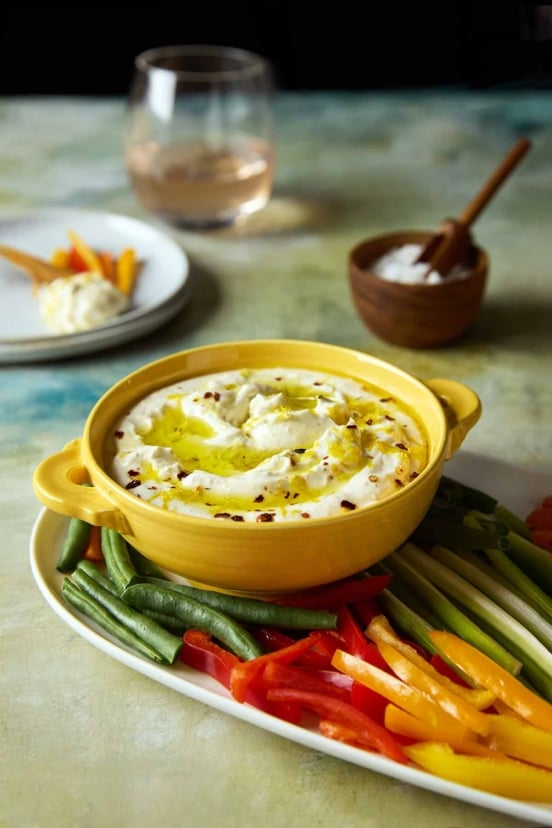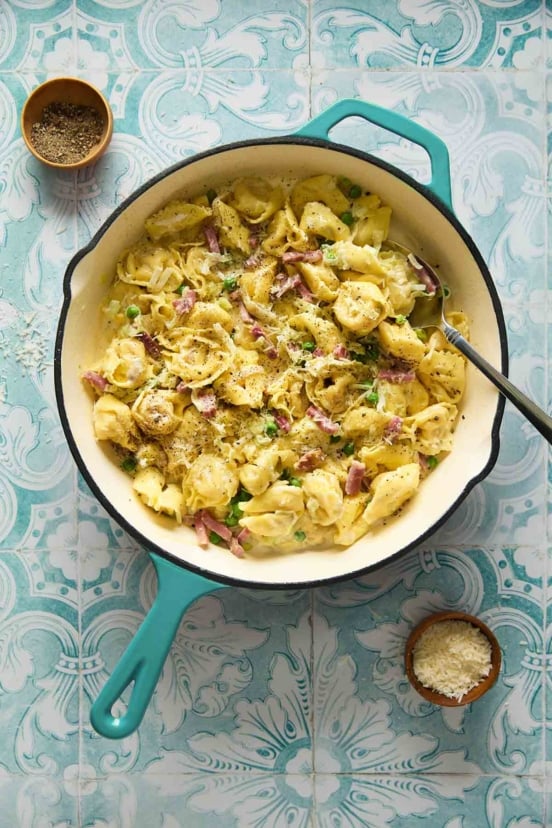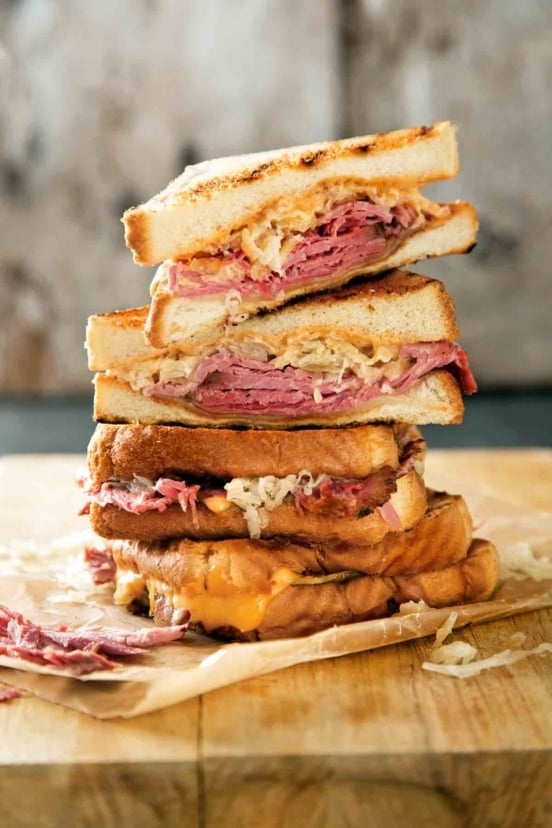
One of my motivations here was to pay homage to the fried whole flounder that you’ll find along the southeast coast, and the other was to make a delicious crispy fried thing that’s also gluten-free. Masa harina, as it turns out, is an excellent ingredient for this, with a subtle corn flavor and a clean, light crunch. It pairs beautifully with the roasted tomatillo salsa, which comes together quickly and can be made up to a day in advance. The overall effect hints at the beginnings of a great fish taco situation, so feel free to serve with a stack of fresh tortillas; or skip the salsa entirely and place the fried fish ribbons alongside fragrant red rice with summer vegetables.–Rob Newton
*What is Masa Harina?
Masa harina looks like very finely ground corn meal, although they’re produced from different types of corn and are processed differently, so you’ll want to refrain from substituting one from the other as the same results won’t be the same. To make masa harina, corn kernels are dried, rehydrated, and treated with lime, making it possible to remove the skins. After the skins are rubbed off, the kernels are thoroughly washed and ground into soft, pliable masa (dough). The fresh masa is then dried and powdered, becoming masa harina (flour). You can find it in Latin American markets as well as most grocery stores.

Fried Fish with Masa
Ingredients
For the tomatillo salsa verde
- 1/4 cup vegetable oil
- 1 pound (about 8) tomatillos, husks removed, fruit rinsed and dried
- 1 to 2 serrano or jalapeño peppers, stems removed and seeded
- 3 garlic cloves, peeled
- 4 scallions, whites and greens separated
- Kosher salt
- 1 small bunch fresh cilantro, 6 sprigs reserved, the rest roughly chopped
For the fish
- 6 to 8 cups vegetable oil, for frying
- 2 pounds boneless flounder, cut into 1/2- to 3/4-inch slivers (12- to 18-mm), no more than 4 inches (10 cm) in length
- 4 large egg whites, whisked with 1/4 cup (60 ml) water
- 1 cup masa harina*
- 1/2 cup rice flour
- 1/4 cup cornstarch
- 1 teaspoon baking powder
- Kosher salt
- 1 tablespoon store-bought or homemade chili powder, plus more to finish
For serving
- 2 limes, cut into wedges
- Store-bought or homemade hot sauce
- Tortillas (optional)
Instructions
Make the tomatillo salsa verde
- Preheat the broiler and line a rimmed baking sheet with foil. Adjust the oven rack to the middle position.
- In a large bowl, combine the oil, whole tomatillos, serrano or jalapeño peppers, garlic, whites of the scallions, and 1 teaspoon salt. Toss to mix very well and spread on the lined baking sheet.
- Broil the tomatillos until they’re charred and browned, about 12 minutes. Remove the scallions, peppers, and garlic, and place on a plate. Flip the tomatillos and return to the broiler until the other sides are nicely browned, about 8 minutes. (Watch them closely!) Remove the baking sheet from the oven and let the tomatillos cool to room temperature.
- Dump all the roasted vegetables into a food processor (not a blender) and add the roughly chopped cilantro and the green parts of the scallions. Puree until smooth. Taste and season with more salt if necessary. Cover and refrigerate the salsa until ready to serve or up to 24 hours.
☞ TESTER TIP: If your salsa seems exceptionally thick, you can thin it with a little water or a squeeze of lime juice.
Fry the fish
- In a large heavy-bottomed pot or tabletop fryer, heat the oil to 350°F (177°C).
- Set up 3 shallow bowls: the first with the fish, the second with egg whites and water, and in the third, whisk together the masa, rice flour, cornstarch, baking powder, 1 teaspoon salt, and chili powder.
- Dip the flounder in the egg whites and then the seasoned masa, shaking off any excess.
- Add just a few pieces to the oil at a time to avoid overcrowding the pot and fry the masa-crusted flounder until golden brown on both sides and opaque throughout, 1 to 2 minutes. (If the oil dips below 350°F (177°C) between batches, wait until it comes up to temperature before frying more fish.) As the fish finishes frying, place it on paper towels or paper sacks torn open and immediately sprinkle the fish lightly with salt and chili powder.
- Serve the fried fish with the salsa, reserved cilantro sprigs, lime wedges, hot sauce, and tortillas, if using.

Nutrition
Nutrition information is automatically calculated, so should only be used as an approximation.
Recipe Testers’ Reviews
The crispy, crunchy coating and amazing tomatillo salsa verde make this recipe a smash. I’ve never been able to get such a wonderful coating on anything I’ve tried frying but this mix of masa harina and rice flour did the trick. And because flounder doesn’t have its own strong flavors, you need to match it with something special and the tomatillo salsa was it.
Of course roasting the tomatillos unleashes tons of wonderful flavors and combining that with the pepper, garlic, cilantro and scallions makes a very special salsa. It was one of those where I found myself saying “oh there’s the tomatillo, oh, there’s the cilantro, oh, there’s the garlic.” We were happy to have some left over.
As far as the recipe goes, it’s pretty simple and straightforward. Of course the key is to keep the oil at the right temp but that’s just a matter of paying attention. This one’s a keeper!
This recipe has been on my “to try” list for a while but finding flounder around here was a challenge. When I was finally able to get my hands on some, I knew what was for dinner. We keep masa in our house because I make tortillas frequently (South Texas, ya’ll!) and finding other uses for it is always a bonus. I love the fact that masa gives that corn flavor without the “grit” of cornmeal so I had high hopes for this dish and it did not disappoint.
Additionally, I make a roasted tomatillo salsa verde regularly that is similar to this one so I was looking forward to trying a different version. I served this dish to my family (total of 5) and we had quite a bit of fish and salsa leftover so if you don’t have big eaters this will probably feed 8 people (especially if you’re serving it with tortillas and any side dishes). It took approximately 1 1/2 hours from start to finish due to the length of time to fry the fish in batches. If you have a larger fryer it might take less time.
I have a wonderful chipotle chili powder that might be wonderful here. It might help to also add a bit of cayenne in addition to the chili if you like more “heat”. Because of the thinness of the fish strips, breading them took a bit more time than if they had been larger pieces but they fried up beautifully. I salted and dusted some chili over them but again, the fish itself was slightly lacking in flavor. I used my “tabletop” fryer which does not hold a lot but is great for the occasional deep frying so it took 8 batches to fry all the flounder strips.
We served it hot out of the fryer with corn tortillas, the salsa, lime wedges, and some shredded cabbage (something I always serve with fish tacos) and had Cholula on hand for those who wanted hot sauce. My husband resorted to his atomic hot sauce stash for more heat.
All in all this was a very good dish and will please those who don’t like spicy foods but could have used a little more kick for those of us who do like things with a bit more heat. I think the solution to that is to use a hotter chili powder and/or add cayenne to the dredge plus add a bit more on when removing from the fryer. This dish is definitely one I’ll make again and may try it with a different fish as flounder is harder to come by, perhaps cod or haddock might work.
This fry method is a keeper. We are picky here in SC about our seafood so I was anxious to see if a gluten-free option really worked. I can say whether I’m cooking for gluten-free friends or not I will for sure use this dredge again. The fish came out tender yet crispy, never getting soggy. Husband actually ate leftovers with grits and eggs the next morning (yeah, a SC thing).
I make tomatillo salsa frequently and prefer roasting the vegetables at 425°F for 20 to 30 minutes over this method, which splattered oil all over my oven. The slightly longer roast still gives you a charred top and allows the veg to sweeten some. Seasoning with salt alone was ok but the addition of the juice of half a lime brightened it up.
Sometimes I get really hungry for a fish taco or a nice, lightly-breaded piece of fried fish but I’ve never found a good recipe to make at home until now. The mild taste of flounder is a great choice but can be hard to find. Other mild, flat fish such as tilapia would be a good substitute.
Tomatillo salsa is a fresh tasting addition to tacos or fried fish. My suggestions for this recipe is to reduce the amount of oil used to broil the tomatillo to 1 to 2 tablespoons and be aware of the recipe directions to place the pan in the middle of the oven so the tomatillos can brown but not burn. I like a little more onion flavor and found using a 1/2 of a small sliced yellow onion to be a nice substitute for the scallions.
We enjoyed the resulting crispiness of the masa harina (dried and ground corn dough which can be found in most grocery stores), cornstarch and rice-flour coating. If you prefer to fry the entire fish filet to save some time instead of cutting and breading slices—do it and take care not to overload your pan or fryer. The flavor of the fish is quite mild so the suggested condiments (salsa verde, hot sauce and lime wedges) plus the extra sprinkle of chili powder and salt are great additions.
The final dish? Well, my husband had seconds—which means he really liked this dish because he’s not typically a fish lover. I liked it too. I served it with Mexican fried rice but next time we’re going for the fish tacos!
I also suspect this recipe will adapt well to being baked instead of deep fried. I would use melted butter instead of the egg white, dip the fish in the melted butter, breading and bake at 400°F until flaky.

















I was thinking of making escabeche. Someone had given me a bunch of frozen fish so I decided to shallow fry it after dusting it with well-seasoned masa harina. I combined refined coconut and avocado oil for frying. After the fish was cooked, I just couldn’t put the escabeche vegetables on top of the fish and lose all that crispiness. Instead, I served the veggies on the side with a housemade tartar sauce that contained Thai chilis for bite and bread for sandwiches, not tortillas. Just happened that way. It was really good. I like using the masa harina rather than flour.
That sounds like a great meal, Ann. Thanks so much for taking the time to comment.
Wow. So good and not difficult.
Not at all, Carlin. Super easy. And your fish looks great!